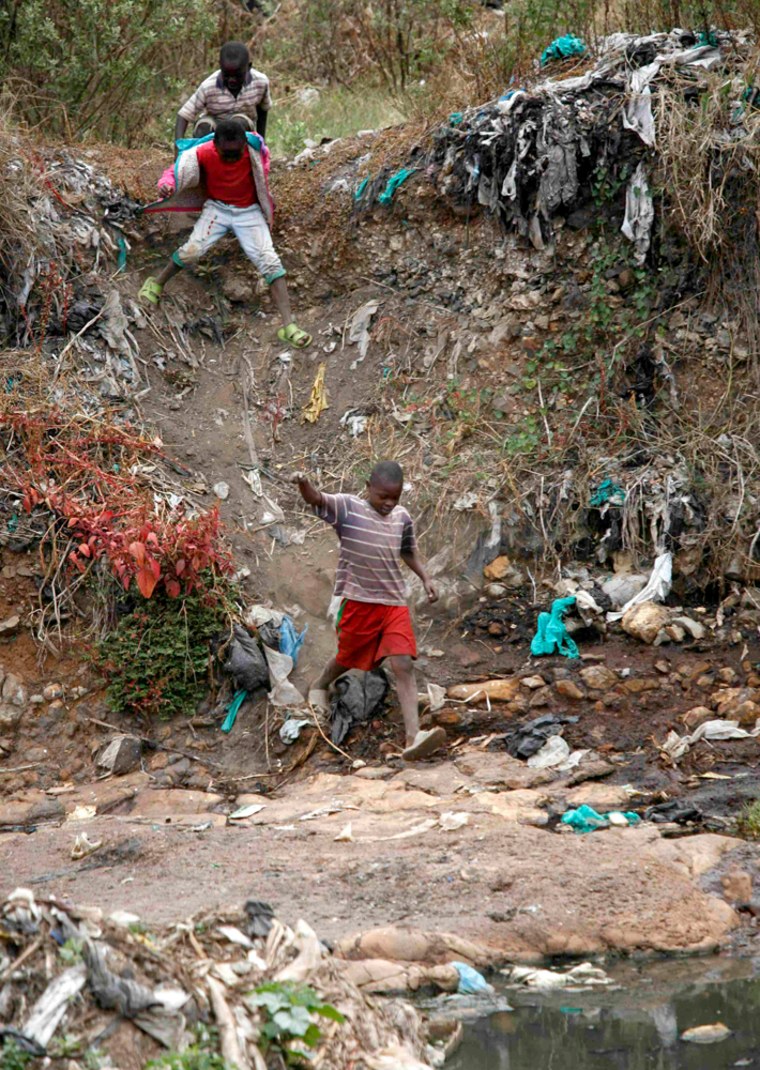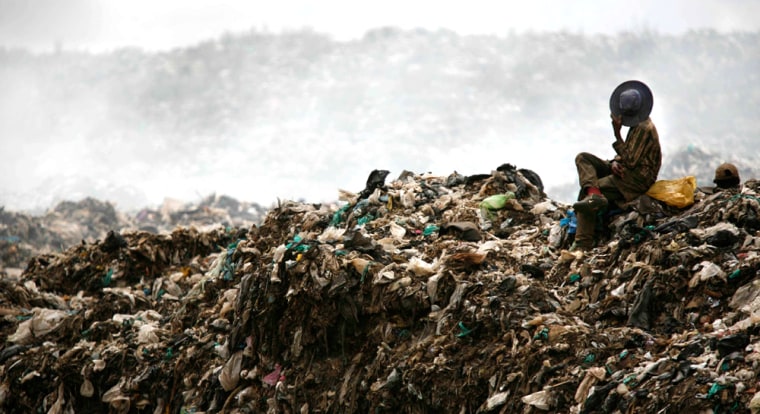Willis Ochieng, 10, scavenges through smoking refuse piled as high as a house at one of Africa’s biggest rubbish mountains, his friends sitting nearby sucking on dirty plastic bottles of noxious yellow glue.
Located near slums in the east of the Kenyan capital Nairobi, the open dump receives some 2,000 tons of garbage daily. A U.N. study published on Friday says it is seriously harming the health of children and polluting the city.
“I have been coming here with my friends since I was eight,” Willis told Reuters. “We come every day from the morning to the night. We come for plastic bags, anything metal we can sell.”
As he spoke, maribu storks circled amid hundreds of red and green plastic bags blown by the breeze over the 30-acre Dandora site. At his feet, rats picked through the fetid, stinking heap.
“I want to go to school but I need money to buy food and help my mother,” said the boy, dressed in a ragged gray T-shirt and shorts.
Harrison Juma, 15, is another victim. He lives on the edge of the dump and the toxic smoke from burning trash has leeched into his clothes, his hair and lungs.
"I don't sleep soundly and I always cough at night," Juma said at his school near the Dandora waste site. "I even cough during class and lose my concentration."
Asthma, anemia are endemic
Sitting just five miles from the capital's center, Dandora is polluting all of Nairobi, the United Nations study said. It said asthma, anemia and skin infections are endemic among the children in slums around the site.
The report from the United Nations Environment Program was the latest in a series of studies highlighting problems in the poor nations of Africa and other continents, where a lack of zoning and inadequate policing of the rules that exist lead to unhealthy situations like Dandora.
According to the World Health Organization, a quarter of all diseases affecting mankind are attributable to environmental risks. More than 4.7 million children under 5 die each year from environmentally related illnesses, WHO said.
The 30-acre Dandora dump takes in garbage that includes industrial and medical waste like used syringes. The U.N. study found high levels of lead, mercury and cadmium at the site and surrounding slums in eastern Nairobi.
Nearly half the soil samples from the area had lead levels almost 10 times higher than usual. Lead can cause such problems as low birth weight and memory and learning problems.
'More shocking' than expected
"We had anticipated some tough and worrisome findings, but the actual results are even more shocking than we had imagined at the outset," said Achim Steiner, the U.N. agency's executive director.

The study found that half of 328 children tested had lead concentrations in their blood exceeding the internationally accepted level. Most of them, like Juma, suffer respiratory problems.
Children stream into the sprawling dump every day to scavenge for plastic bags and scrap metal to sell, picking through enormous piles of stinking rubbish that have risen over the past three decades. On windy days, smoke sweeps across the nearby slums.
“The poor are the best recyclers in the world,” said a local priest, Daniele Moschetti. “Nothing of value goes to waste. But this should not put them and their families’ lives in danger.”
The Nairobi River, which many people use to bathe and to wash clothes, runs beside the dump, extending environmental and health risks to the communities living downstream, the report said.
"We always victimize the poor," said Hassan Omar Hassan of Kenya National Commission on Human Rights. "There should be a mechanism to manage the waste here."
Moschetti said the authorities need to clean up the site and deal with the health problems of nearby residents. "Give these people a chance to live longer," he said.
Benjamin Njenga, a city councilman, said Nairobi doesn't have the money to manage the waste now but he hopes funds will be available by next year from international donors and Kenya's government. There was no estimate on how much a cleanup would cost.
